 Albuquerque sunrise from Mesa Prieta, Petroglyph National Monument I’m a Night Owl But… Too many years of 3- and 4-set nights playing keyboards in nightclubs turned me into a night person. So I grumbled when the alarm went off at 0-dark-thirty, but that’s the price of admission for shooting in warm sunrise light. Why Warm Light? Everyone seems to like their pictures bathed in warm light. Does this come from our ancestors feeling comfy by a warm fire? Is it from their hunting success at sunrise? Are we “wired” to relax in warm light? A Google search for ‘human psycho-visual reaction to warm color temperatures’ (yes, I’m a geek) gave me some clues. First, we’re more alert in full daylight (6500° K) than we are in warm light (3000° K). That’s for artificial lighting while typing indoors. According to lighting designer Johanna-Mai Vihalem, people prefer the lighting in the natural environment they grew up in. This varied all over the place – folks from the desert prefer mid-day blueness they associate with warmth in winter, while northern European street cafes use diffuse lamp shades with a warm yellow glow to simulate candlelight. The human visual response peaks at 550 nm wavelength – equating roughly to 5390° K, green. We probably needed to distingish between plants and animals in a forest environment for hunting success, so we evolved peak sensitivity to green. There is no scientifically-proven answer for why we like yellow-orange color. Maybe one of you cognitive scientists out there can take this on as a Ph.D. research project. Warm Morning vs Cool Noon When I’m travelling, I don’t always arrive at sunrise. But when I lead a photo tour, everyone arrives in time to capture their favorite light. At a recent photo tour on Petroglyph National Monument’s Mesa Prieta after that grumbly wake-up, I photographed the same petroglyphs at different times of day. 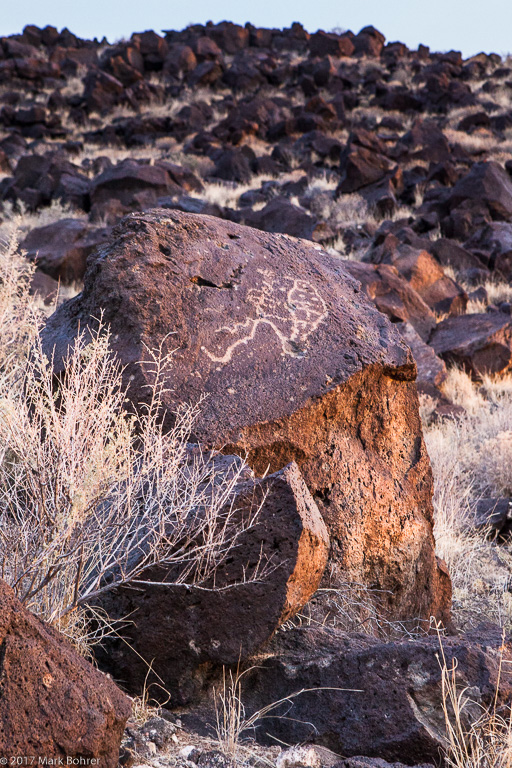 “Paramecium” in warm morning light, Mesa Prieta We were blessed with cloudy skies ahead of an approaching storm system, and low-angle winter light. One of my favorite ‘glyphs is what looks like a paramecium, deeply-etched into a fallen bolder. We could really see the deep redness of the already-browned lava rock a few minutes after the sun climbed above the Sandias. It looked like the rock had burned. 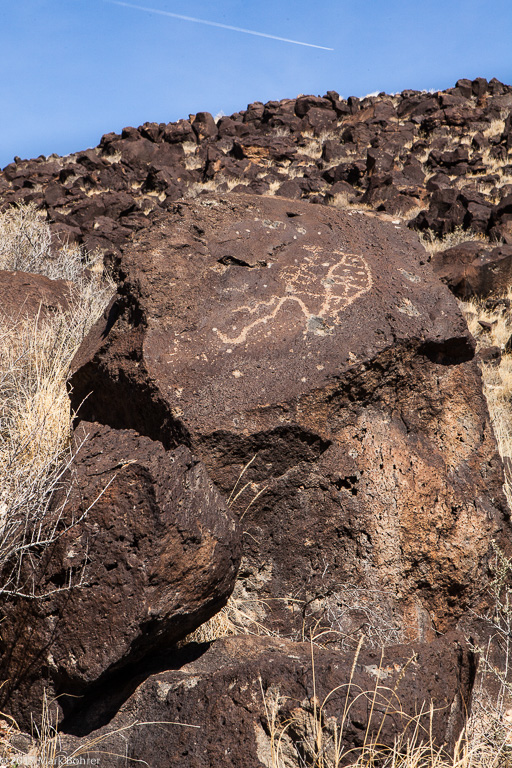 “Paramecium” at noon, Mesa Prieta Near noon, the same shot looked ordinary (for lack of a better term), even with a diagonal contrail in the sky above. The cold blue light was far less appealing. 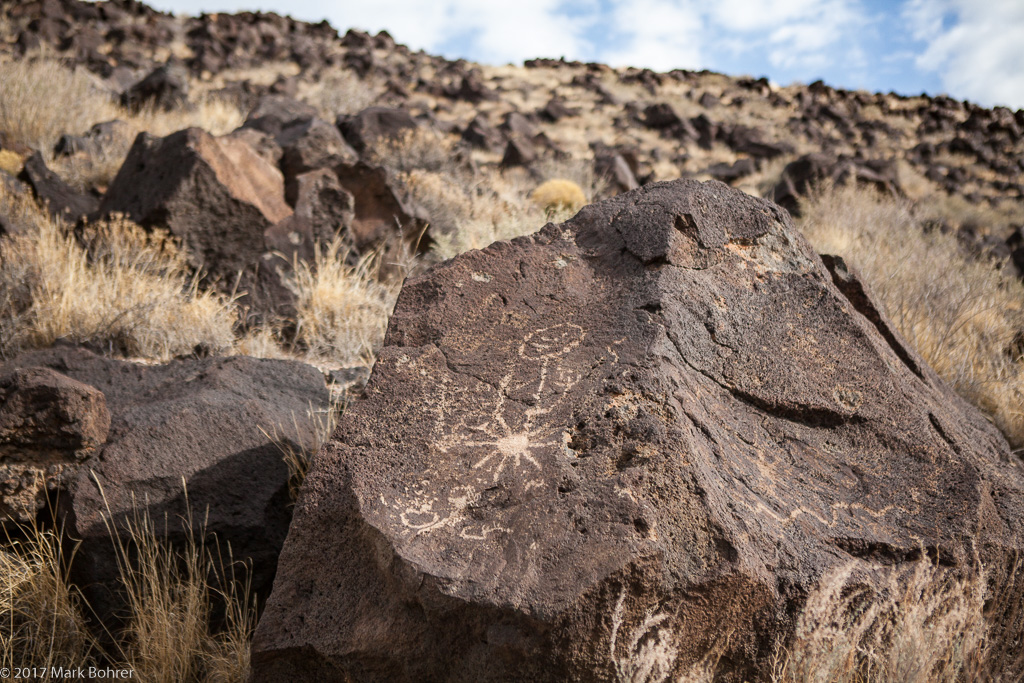 Balloon man and sunburst at noon, Mesa Prieta 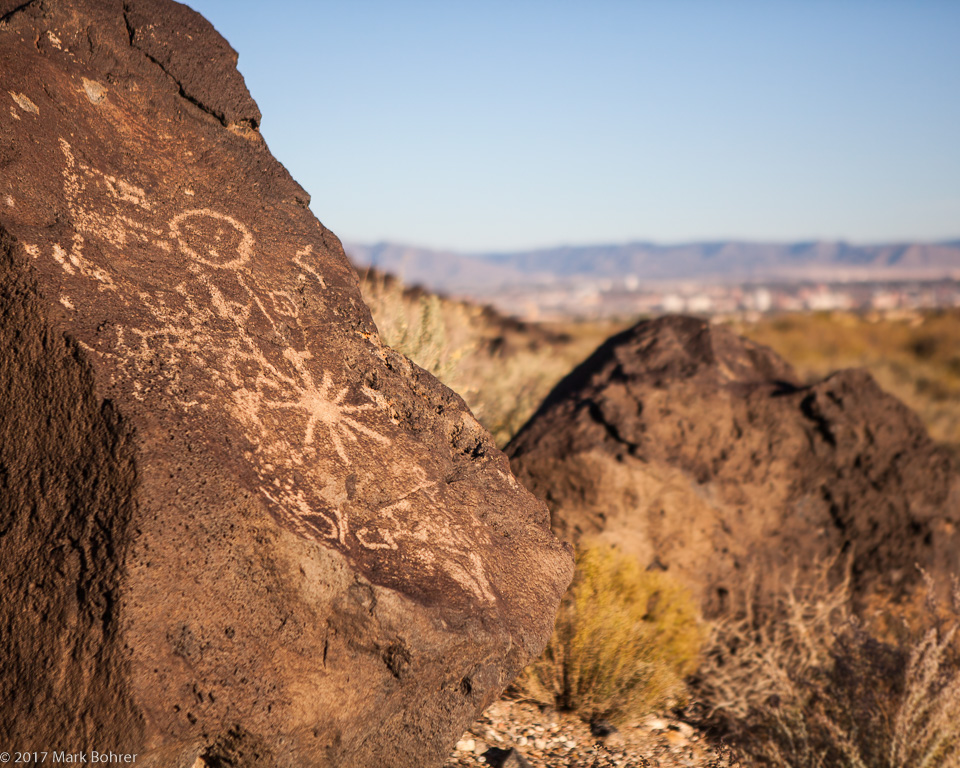 Balloon man and sunburst with urban background – sunset, Mesa Prieta Another favorite, balloon man and sunburst, felt the same way. While a cloudy-day sky was more interesting, the plain brown rock was ‘blah’ near noon. A warmly-lit closeup near sunset felt better. The prize-winner included an out-of-focus urban background – the contrast between ancient and modern culture. 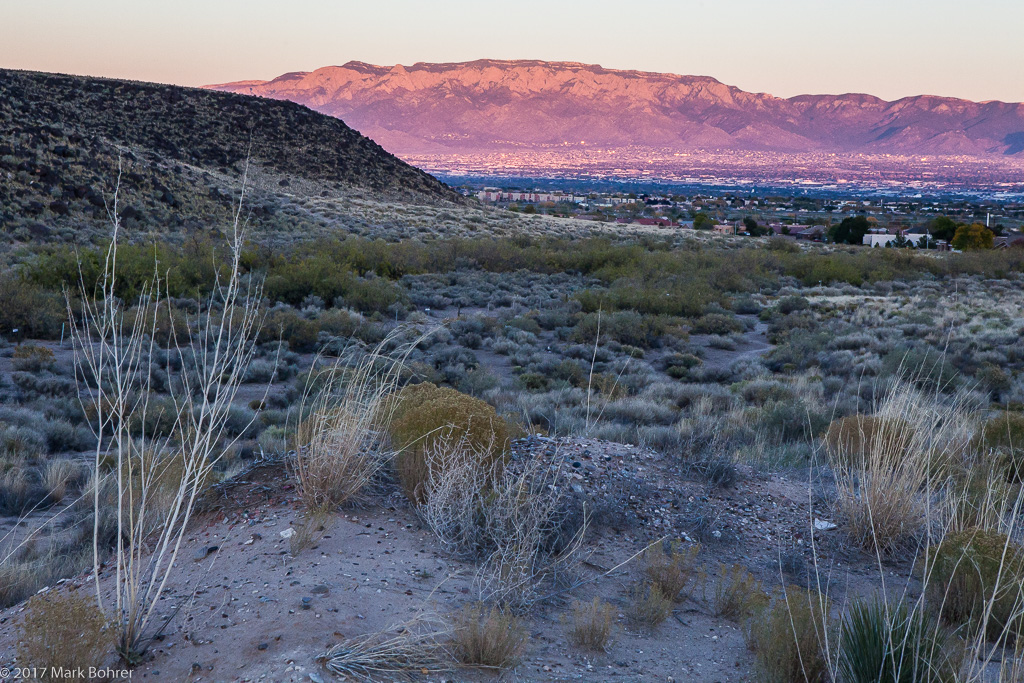 After-sunset light on the eastern horizon Stay After and Shoot the Opposite Horizon For More Color Most people go home after they shoot the sunset. But the show isn’t over – and sometimes it’s on the eastern horizon, opposite the one the sun disappeared behind. You may get crimson and deep blues and purples, and the moon may rise for you if you’re lucky. 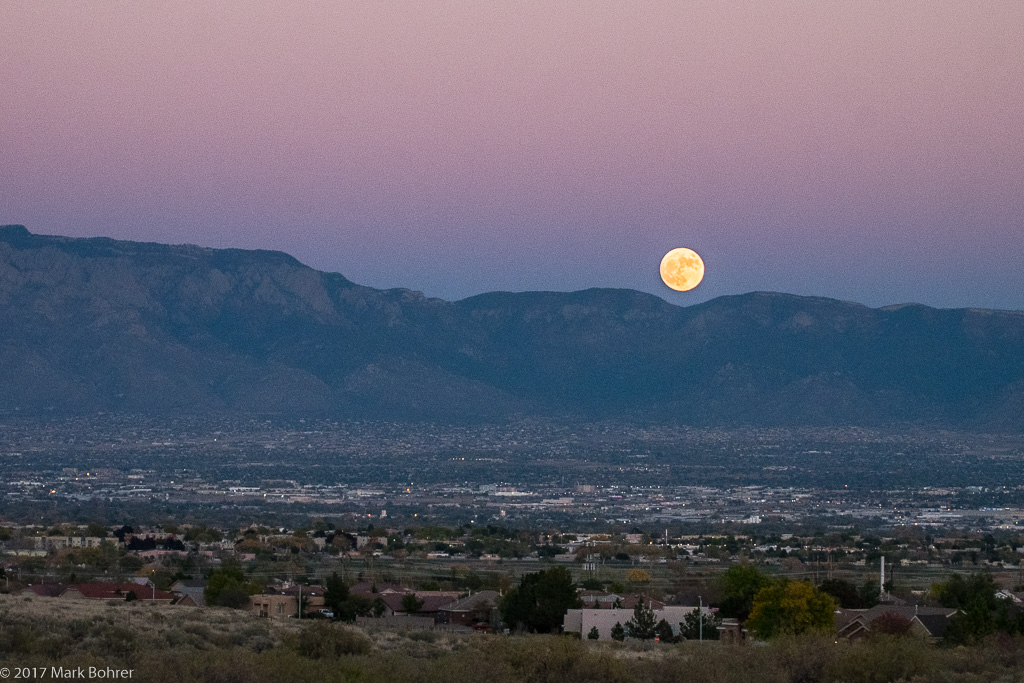 Eastern moonrise after sunset, Mesa Prieta More information B.M.T. Shamsui et all, Effects of Light’s Colour Temperatures on Visual Comfort Level, Task Performances, and Alertness among Students, accessed from http://pubs.sciepub.com/ajphr/1/7/3/ Johanna-Mai Vihalem, answer to Why do we prefer the quality of the yellow light produced by incandescent bulbs to the quality of the white light produced by fluorescent bulbs?, accessed from http://tinyurl.com/z2yw4yt Interesting chart for converting K to NM, accessed from http://tinyurl.com/zpto7fy Uwe Happek, Basics of Lighting: Efficacy, Color Rendering, and Color Temperature, accessed from https://www.electrochem.org/dl/interface/wtr/wtr09/wtr09_p029-030.pdf |
(408) 483-3782
Curious about how to shoot ruins?(408) 483-3782

Recent Comments